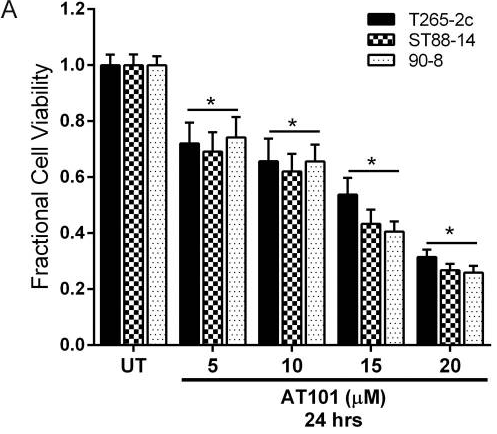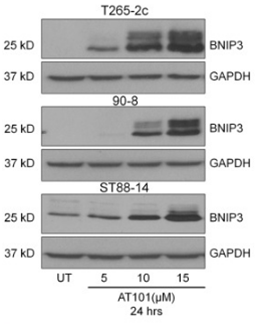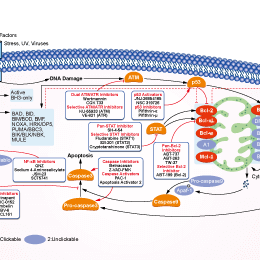
- 阻害剤
- 研究分野別
- PI3K/Akt/mTOR
- Epigenetics
- Methylation
- Immunology & Inflammation
- Protein Tyrosine Kinase
- Angiogenesis
- Apoptosis
- Autophagy
- ER stress & UPR
- JAK/STAT
- MAPK
- Cytoskeletal Signaling
- Cell Cycle
- TGF-beta/Smad
- 化合物ライブラリー
- Popular Compound Libraries
- Customize Library
- Clinical and FDA-approved Related
- Bioactive Compound Libraries
- Inhibitor Related
- Natural Product Related
- Metabolism Related
- Cell Death Related
- By Signaling Pathway
- By Disease
- Anti-infection and Antiviral Related
- Neuronal and Immunology Related
- Fragment and Covalent Related
- FDA-approved Drug Library
- FDA-approved & Passed Phase I Drug Library
- Preclinical/Clinical Compound Library
- Bioactive Compound Library-I
- Bioactive Compound Library-II
- Kinase Inhibitor Library
- Express-Pick Library
- Natural Product Library
- Human Endogenous Metabolite Compound Library
- Alkaloid Compound LibraryNew
- Angiogenesis Related compound Library
- Anti-Aging Compound Library
- Anti-alzheimer Disease Compound Library
- Antibiotics compound Library
- Anti-cancer Compound Library
- Anti-cancer Compound Library-Ⅱ
- Anti-cancer Metabolism Compound Library
- Anti-Cardiovascular Disease Compound Library
- Anti-diabetic Compound Library
- Anti-infection Compound Library
- Antioxidant Compound Library
- Anti-parasitic Compound Library
- Antiviral Compound Library
- Apoptosis Compound Library
- Autophagy Compound Library
- Calcium Channel Blocker LibraryNew
- Cambridge Cancer Compound Library
- Carbohydrate Metabolism Compound LibraryNew
- Cell Cycle compound library
- CNS-Penetrant Compound Library
- Covalent Inhibitor Library
- Cytokine Inhibitor LibraryNew
- Cytoskeletal Signaling Pathway Compound Library
- DNA Damage/DNA Repair compound Library
- Drug-like Compound Library
- Endoplasmic Reticulum Stress Compound Library
- Epigenetics Compound Library
- Exosome Secretion Related Compound LibraryNew
- FDA-approved Anticancer Drug LibraryNew
- Ferroptosis Compound Library
- Flavonoid Compound Library
- Fragment Library
- Glutamine Metabolism Compound Library
- Glycolysis Compound Library
- GPCR Compound Library
- Gut Microbial Metabolite Library
- HIF-1 Signaling Pathway Compound Library
- Highly Selective Inhibitor Library
- Histone modification compound library
- HTS Library for Drug Discovery
- Human Hormone Related Compound LibraryNew
- Human Transcription Factor Compound LibraryNew
- Immunology/Inflammation Compound Library
- Inhibitor Library
- Ion Channel Ligand Library
- JAK/STAT compound library
- Lipid Metabolism Compound LibraryNew
- Macrocyclic Compound Library
- MAPK Inhibitor Library
- Medicine Food Homology Compound Library
- Metabolism Compound Library
- Methylation Compound Library
- Mouse Metabolite Compound LibraryNew
- Natural Organic Compound Library
- Neuronal Signaling Compound Library
- NF-κB Signaling Compound Library
- Nucleoside Analogue Library
- Obesity Compound Library
- Oxidative Stress Compound LibraryNew
- Phenotypic Screening Library
- PI3K/Akt Inhibitor Library
- Protease Inhibitor Library
- Protein-protein Interaction Inhibitor Library
- Pyroptosis Compound Library
- Small Molecule Immuno-Oncology Compound Library
- Mitochondria-Targeted Compound LibraryNew
- Stem Cell Differentiation Compound LibraryNew
- Stem Cell Signaling Compound Library
- Natural Phenol Compound LibraryNew
- Natural Terpenoid Compound LibraryNew
- TGF-beta/Smad compound library
- Traditional Chinese Medicine Library
- Tyrosine Kinase Inhibitor Library
- Ubiquitination Compound Library
-
Cherry Picking
You can personalize your library with chemicals from within Selleck's inventory. Build the right library for your research endeavors by choosing from compounds in all of our available libraries.
Please contact us at info@selleck.co.jp to customize your library.
You could select:
- 抗体
- 新製品
- お問い合わせ
(R)-(-)-Gossypol (AT-101) acetic acid
(R)-(-)-Gossypol (AT-101) acetic acid, the R-(-) enantiomer of Gossypol acetic acid, binds with Bcl-2, Bcl-xL and Mcl-1 with Ki of 0.32 μM, 0.48 μM and 0.18 μM in cell-free assays; does not inhibit BIR3 domain and BID. AT-101 simultaneously triggers apoptosis and a cytoprotective type of autophagy. Phase 2.

CAS No. 866541-93-7
文献中Selleckの製品使用例(19)
カスタマーフィードバック5例
製品安全説明書
現在のバッチを見る:
S281202
DMSO]
100 mg/mL]
false]
Ethanol]
100 mg/mL]
false]
Water]
Insoluble]
false
純度:
99.81%
99.81
(R)-(-)-Gossypol (AT-101) acetic acid関連製品
シグナル伝達経路
Bcl-2阻害剤の選択性比較
生物活性
| 製品説明 | (R)-(-)-Gossypol (AT-101) acetic acid, the R-(-) enantiomer of Gossypol acetic acid, binds with Bcl-2, Bcl-xL and Mcl-1 with Ki of 0.32 μM, 0.48 μM and 0.18 μM in cell-free assays; does not inhibit BIR3 domain and BID. AT-101 simultaneously triggers apoptosis and a cytoprotective type of autophagy. Phase 2. | ||||||
|---|---|---|---|---|---|---|---|
| Targets |
|
| In Vitro | ||||
| In vitro | AT-101 inhibits a panel of different lymphoproliferative malignancies with IC50 ranged from 1.2 μM to 7.4 μM. AT-101 (10 μM) disrupts the Δψm in a concentration- and time-dependent manner in a diffuse large B-cell and in mantle cell lymphoma lines. AT-101 (1 μM or 2 μM) combined with carfilzomib (6 nM or 10 nM) induces apoptosis in HBL-2 and Granta cell lines. [2] AT-101 (20 μM for 24 hours) results in a median 72% apoptosis and down-regulation of Mcl-1 in CLL lymphocytes in both suspension culture as well as stromal coculture. Stromal cells express undetectable levels of antiapoptotic but high levels of activated ERK and AKT proteins and has low or no apoptosis with AT-101. [3] AT-101 induces apoptosis in a time- and dose-dependent fashion, with ED50 values of 1.9 mM and 2.4 mM in Jurkat T and U937 cells, respectively. AT-101 (10 μM) combined with radiation (32 Gy) induces more apoptosis than radiation alone and exceeds the sum of the effects caused by the single agent treatments. AT-101 activates SAPK/JNK in a dose- and time-dependent manner. [4] AT-101 (10 µM) induces apoptosis through activation of caspase-9, -3, and -7 in VCaP Cells. AT-101 (10 µM) decreases Bcl-2 and Mcl-1 expression in VCaP cells. [5] AT-101 (< 20 μM) is able to inhibit the growth of multiple myeloma cells despite the stimulatory growth effects provided by stromal cells in the bone marrow milieu. AT-101 (10 μM) induces apoptosis in multiple myeloma cells via the activation of caspases 3, caspases 9 and PARP. AT-101 (10 μM) promotes apoptosis in multiple myeloma cells by disrupting the Bax/Bcl-2 ratio and the mitochondrial membrane potential. [6] | |||
|---|---|---|---|---|
| Kinase Assay | Fluorescence-Polarization-Based Binding Assay | |||
| For competitive binding experiments, Bcl-2 protein (40 nM) and FAM-Bid peptide (2.5 nM) are preincubated in the assay buffer (100 mM potassium phosphate, pH 7.5; 100 μg/mL bovine gamma globulin; 0.02% sodium azide, 5 μL of a solution in DMSO of AT101 is added to the Bcl-2/FAM-Bid solution in Dynex 96-well, black, round-bottom plates to produce a final volume of 125 μL. For each experiment, a control containing Bcl-2 and Flu-Bid peptide (equivalent to 0% inhibition), and another control containing only FAM-Bid, are included on eachassay plate. After 4 hours incubation, the polarization values in milipolarization units (mP) weremeasured at an excitation wavelength at 485 nm and an emission wavelength at 530 nm using the Ultra plate reader. IC50,the inhibitor concentration at which 50% of bound peptide is displaced, is determined from the plot using nonlinear leastsquares analysis and curve fitting performed using GraphPad Prizm 4 software. The unlabeled Bid BH3 peptide is used as the positive control. PF for Bcl-xL protein, Bak BH3 peptide labeled with 6-carboxyfluorescein succinimidyl ester (FAM-Bak) instead of the FAM-Bim to maximize the signal. It is determined that FAM-Bak has a Kd of 6 nM to Bcl-xL protein. The competitive binding assay for Bcl-xL is same as that for Bcl-2 with the following exceptions. 30 nM of Bcl-xL protein and 2.5 nM of FAM-Bak peptide in the following assay buffer: 50 mM Tris-Bis, pH 7.4 and 0.01% bovine gamma globulin. PF for Mcl-1 protein, FAM-Bid peptide and human Mcl-1 protein are used. It is determined that FAM-Bid peptide binds to human Mcl-1 protein with a Kd of 1.71 nM. The competitive binding assays for Mcl-1 are performed in the same manner as that for Bcl-2 with the following exceptions. 5 nM Mcl-1 and 1 nM Flu-Bid peptide in the following assay buffer: 25 mM Tris, pH 8.0; 150 mM NaCl and 0.05% Pluronic acid | ||||
| 細胞実験 | 細胞株 | RL, H9, SKI, HBL-2, Granta and JJN-3 cell lines | ||
| 濃度 | ~10 μM | |||
| 反応時間 | 72 hours | |||
| 実験の流れ | Cells are counted and resuspended at an approximate concentration of 3×105 cells/well in a 24-well plate. AT-101 is diluted in DMSO that is maintained at a final concentration of less than 0.5%. Concentrations of AT-101 from 1 nM to 10 μM are used in most experiments. Following incubation at 37 ℃ in a 5% CO2 humidified incubator, 100 μL from each well is transferred to a 96-well opaque-walled plate; cell-Titer-Glo Reagent is added in a 1:1 ratio. Contents are mixed for 2 minutes on an orbital shaker to induce cell lysis. The plates are allowed to incubate at room temperature for 10 minutes before recording luminescence with a Synergy HT Multi-Detection Microplate Reader. In the schedule dependency experiments, serial dilutions of each drug are prepared in ratios relative to their IC50. Cells are preincubated with AT-101 for up to 72 hours, while 4-HC is added for a 24-hour period, being added at time 0, 24 hours, and 48 hours from the start of incubation. Each experiment is performed in triplicate and repeated at least twice. | |||
| 実験結果図 | Methods | Biomarkers | 結果図 | PMID |
| Growth inhibition assay | Cell viability |

|
24824755 | |
| Western blot | BNIP3 Smac / Cyt C p53 / Cox IV p-AKT / AKT APE1 / Bcl-2 / p53 / p-p53 / NF-κB |

|
24824755 | |
| In Vivo | ||
| In Vivo | AT-101 is still detectable in plasma with average concentrations of 0.49 μM for the 35 mg/kg group and 0.39 μM for the 200 mg/kg group in SCID beige mice bearing RL-DLBCL xenograft. AT-101 peak plasma concentration is observed after 30 minutes of administration of the drug in both the dose levels, with the 200 mg/kg group showing a plasma average concentration almost 4 times greater than the 35 mg/kg group (7.88 μM and 27.78 μM respectively) in SCID beige mice. AT-101 (25 mg/kg to 100 mg/kg, orally) indefinitely results in earlier onset of weight loss equivalent to more than 10% of the pretreatment weight and death in SCID beige mice. AT-101 (35 mg/kg, orally per day for 10 days) plus intraperitoneal cyclophosphamide (Cy) and intraperitoneal rituximab (R) show significantitumor volume control compared to any other treatment group. [2] AT-101 (15 mg/kg, p.o., 5 days/week) as a single agent in intact mice significantly reduces the development of VCaP tumor growth compared to untreated tumors at weeks 2 to 6. AT-101 in combination with surgical castration delays the onset of androgen-independent VCaP tumor growth compared to castration-only or AT-101-only groups in mice. [5] | |
|---|---|---|
| 動物実験 | 動物モデル | SCID beige mice bearing RL-DLBCL xenograft |
| 投与量 | 100 mg/kg | |
| 投与経路 | Oral gavage | |
| NCT Number | Recruitment | Conditions | Sponsor/Collaborators | Start Date | Phases |
|---|---|---|---|---|---|
| NCT05338931 | Recruiting | B-cell Non Hodgkin Lymphoma |
AbClon |
March 15 2022 | Phase 1|Phase 2 |
| NCT00934076 | Withdrawn | Carcinoma Non Small Cell Lung |
University of Alabama at Birmingham|Ascenta Therapeutics |
February 2010 | Phase 1 |
| NCT00561197 | Terminated | Locally Advanced Esophageal or GE Junction Cancer |
Ascenta Therapeutics |
August 2007 | Phase 1|Phase 2 |
|
化学情報
| 分子量 | 578.61 | 化学式 | C30H30O8.C2H4O2 |
| CAS No. | 866541-93-7 | SDF | Download (R)-(-)-Gossypol (AT-101) acetic acid SDFをダウンロードする |
| Smiles | CC1=CC2=C(C(=C(C(=C2C(C)C)O)O)C=O)C(=C1C3=C(C4=C(C=C3C)C(=C(C(=C4C=O)O)O)C(C)C)O)O.CC(=O)O | ||
| 保管 | |||
|
In vitro |
DMSO : 100 mg/mL ( (172.82 mM); 吸湿したDMSOは溶解度を減少させます。新しいDMSOをご使用ください。) Ethanol : 100 mg/mL Water : Insoluble |
モル濃度計算器 |
|
in vivo Add solvents to the product individually and in order. |
投与溶液組成計算機 | |||||
実験計算
投与溶液組成計算機(クリア溶液)
ステップ1:実験データを入力してください。(実験操作によるロスを考慮し、動物数を1匹分多くして計算・調製することを推奨します)
mg/kg
g
μL
匹
ステップ2:投与溶媒の組成を入力してください。(ロット毎に適した溶解組成が異なる場合があります。詳細については弊社までお問い合わせください)
% DMSO
%
% Tween 80
% ddH2O
%DMSO
%
計算結果:
投与溶媒濃度: mg/ml;
DMSOストック溶液調製方法: mg 試薬を μL DMSOに溶解する(濃度 mg/mL, 注:濃度が当該ロットのDMSO溶解度を超える場合はご連絡ください。 )
投与溶媒調製方法:Take μL DMSOストック溶液に μL PEG300,を加え、完全溶解後μL Tween 80,を加えて完全溶解させた後 μL ddH2O,を加え完全に溶解させます。
投与溶媒調製方法:μL DMSOストック溶液に μL Corn oil,を加え、完全溶解。
注意:1.ストック溶液に沈殿、混濁などがないことをご確認ください;
2.順番通りに溶剤を加えてください。次のステップに進む前に溶液に沈殿、混濁などがないことを確認してから加えてください。ボルテックス、ソニケーション、水浴加熱など物理的な方法で溶解を早めることは可能です。
技術サポート
ストックの作り方、阻害剤の保管方法、細胞実験や動物実験の際に注意すべき点など、製品を取扱う時に問い合わせが多かった質問に対しては取扱説明書でお答えしています。
他に質問がある場合は、お気軽にお問い合わせください。
* 必須
よくある質問(FAQ)
質問1:
Is it S2812 (-)-gossypol or another enantiomer?
回答
It is the R-(–)-gossypol acetic acid.

